Twelve original castles exist in all of Japan; eleven of them are located in urban areas. Only one — Bitchū Matsuyama Castle in Takahashi, Okayama — can be found on a mountaintop far from a city center. Accordingly, it also has the highest elevation (430m above sea level) among the twelve, and is the most difficult for visitors to reach.
To get there from Matsue, we planned to take one of the earliest trains, departing at 06:55, so we checked out of our hotel around 06:30, proceeded through the underpass to the station, and bought a minimal breakfast of rice balls and coffee.

The Yakumo limited express runs hourly between Okayama and Izumoshi via the Hakubi Line, and connects Matsue to Bitchū-Takahashi in just over two hours.
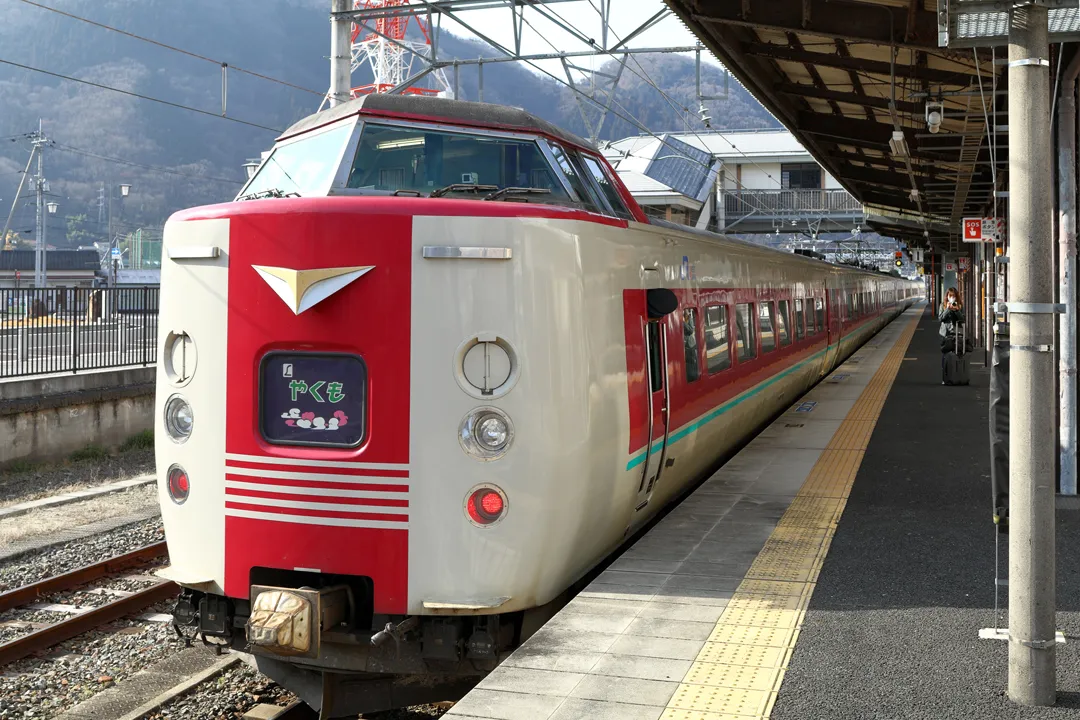
Although the trains on this service are the oldest limited express type still in use in Japan, they are still clean and well-maintained, and were upgraded in the 2000s with the same comfortable seats as more modern trains.

Upon arriving at Bitchū-Takahashi Station, we stored our luggage in coin lockers and hailed a taxi. Even in a small town like Takahashi with a population of only 27,000, taxis were readily available in front of the station, highlighting the unparalleled convenience of travel in Japan.
Actually, there is no road access to the castle at all. After a 10-minute ride, the taxi dropped us off at the parking area, partway up the mountain at an elevation of 291m. Then we then had to hike for around 25 minutes to reach the summit.

There is only one route to the castle keep — a steep path with uneven steps and sharp corners, through multiple layers of fortifications. The unforgiving terrain prevents any approach from other directions. This layout would have given the castle’s defenders an overwhelming advantage against attacking enemies.

While a castle has existed on the site in some form since the 13th century, the current keep was constructed in a period of three years starting from 1681 and is relatively small, being the only two-story one among the twelve originals (all others have at least three stories). However, the natural defensive advantages of its location compensate for its lower height.

There were only a few domestic tourists there, nearly outnumbered by locals hiking for exercise. Disappointingly, we found the view from the top to be obstructed by trees except for the narrow area in front of the entrance. It was unclear whether this was by design or the trees were simply taller than they had been three centuries ago.

A notable peculiarity of Bitchū Matsuyama Castle is that a cat named Sanjūrō lives there. After employees found it in the castle, they decided to keep it around to attract more tourists. Many visitors had presumably fed it, so it had become very fat and lazily sat there enjoying the sunny weather. We didn’t have anything to feed to Sanjūrō so we just took some photos with it.
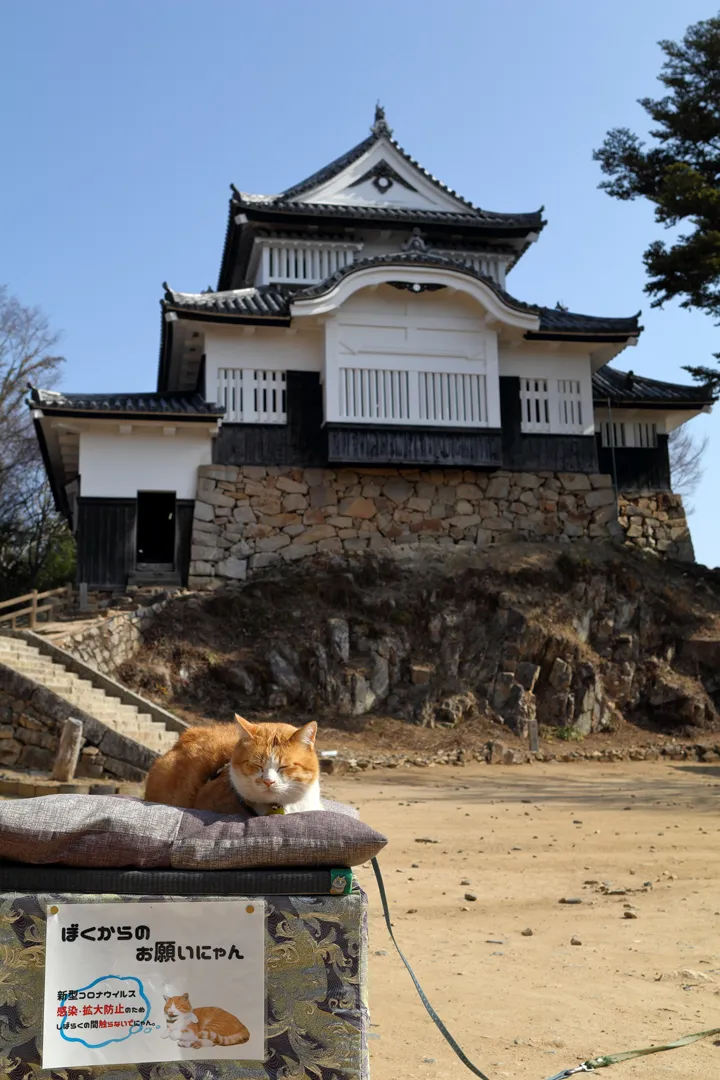
Instead of taking another taxi back to the station, we walked all the way there since the route was entirely flat or downhill and it would have been difficult to get a taxi at the castle’s parking area. It took an hour or so but walking through the town was quite pleasant.
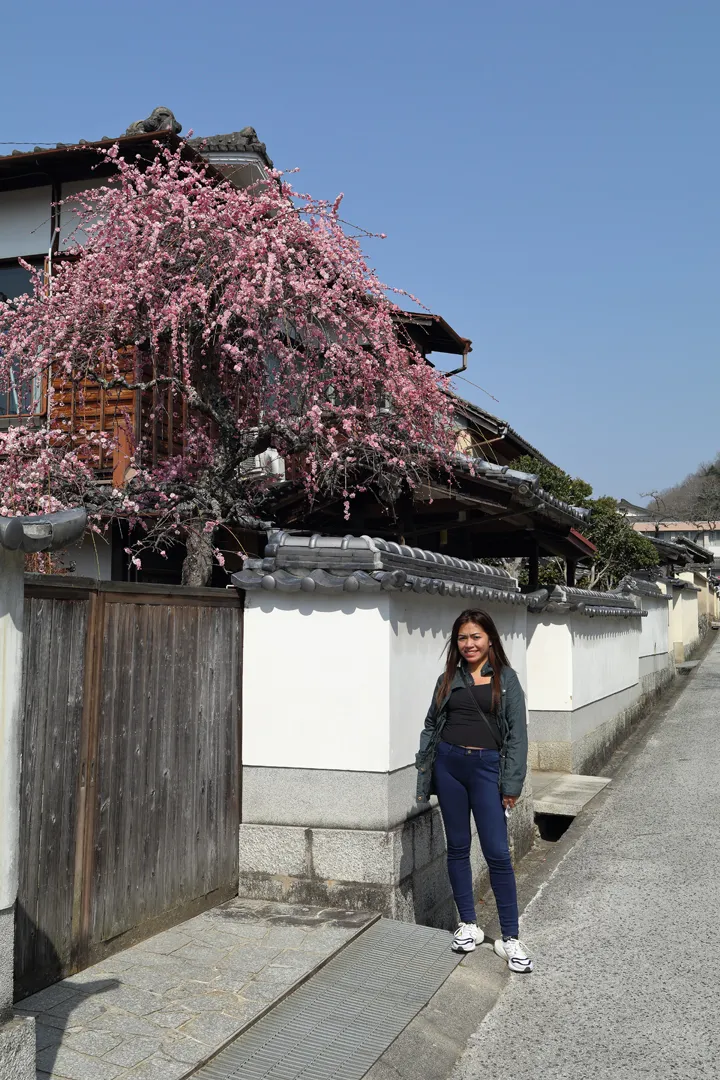
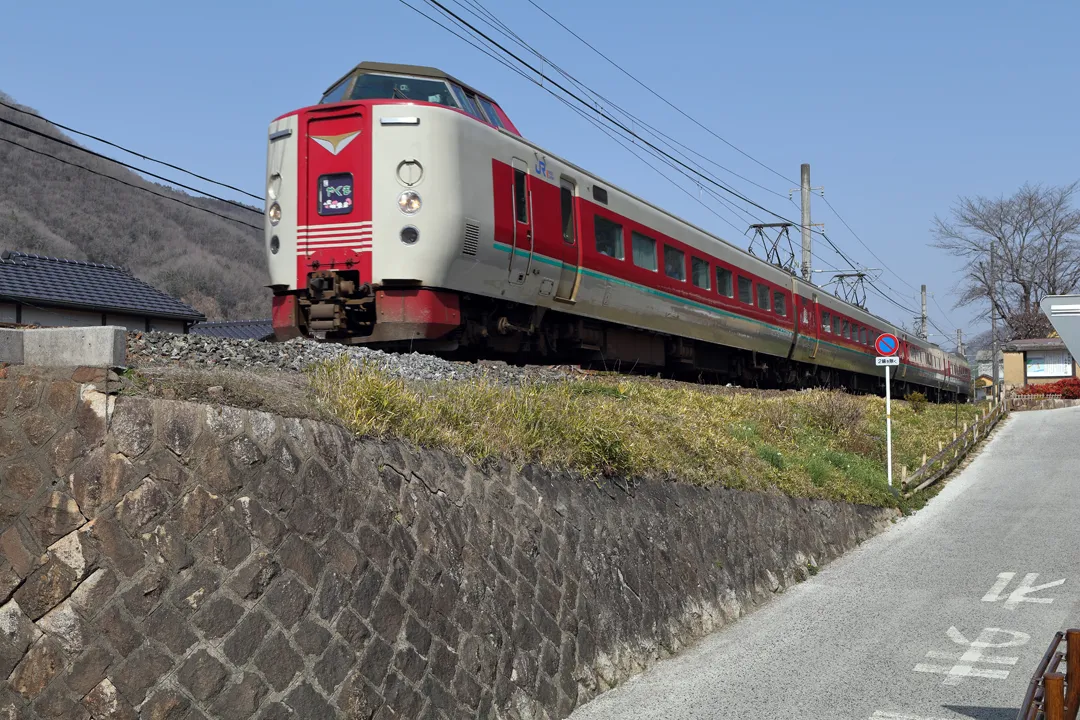

After reaching the station, we immediately went to the tourist information center because Ritz had left her phone in the taxi earlier and we had no other options to find it. The only employee there spoke no English, but we were able to communicate using machine translation and she managed to find the phone by calling every local taxi company to inquire about it. We will never forget this.
As the phone was found more quickly than expected, we had enough time for lunch before we needed to catch the train onward to Okayama. First, we tried to look for a restaurant in the main shopping street. Unfortunately, nearly all of the businesses there appeared to be closed or abandoned.

On a more positive note, there was a huge mural of Sanjūrō.

Eventually, we found Kawakamiya across the street from the station. I ordered yakisoba but it was nothing special.
Back in the station, we retrieved our luggage and waited for the next train to Okayama. The trains were still running at a reduced frequency due to the pandemic, so the next scheduled limited express would not arrive until more than an hour later. We couldn’t afford to wait that long and had no choice except to take a crowded local train.
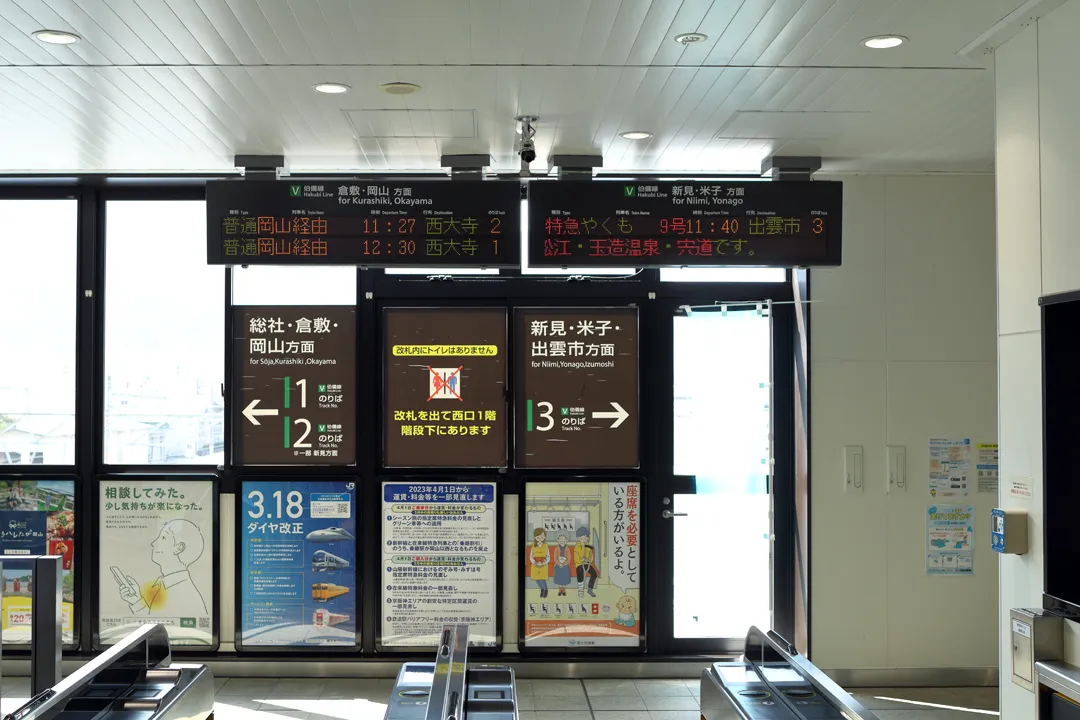
At Okayama Station, we had only 13 minutes to change trains, although this was easily manageable without rushing. It was only 13:30 by then — there was still a lot left to do in the second half of the day.
